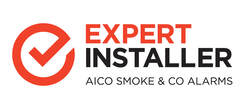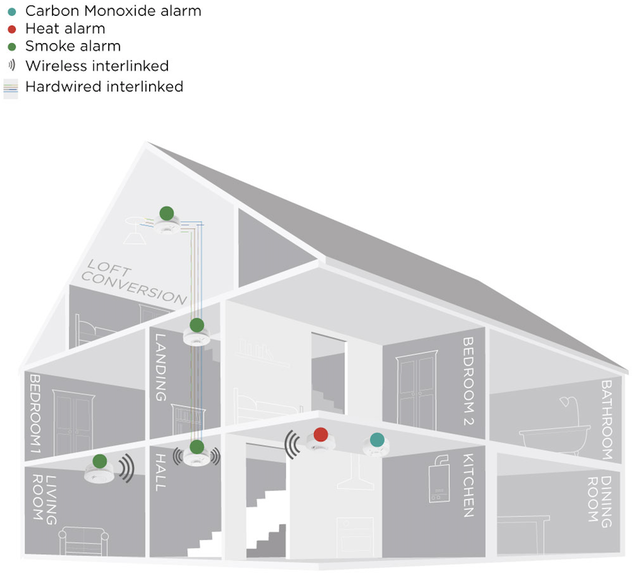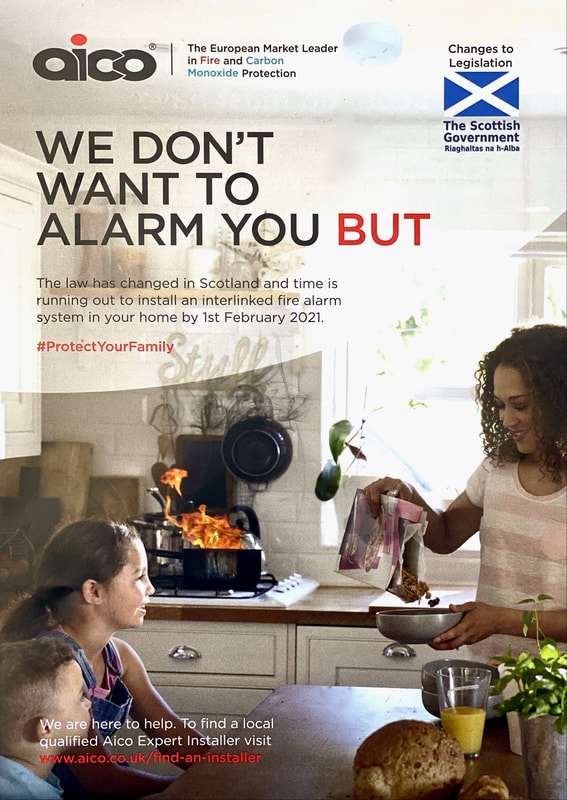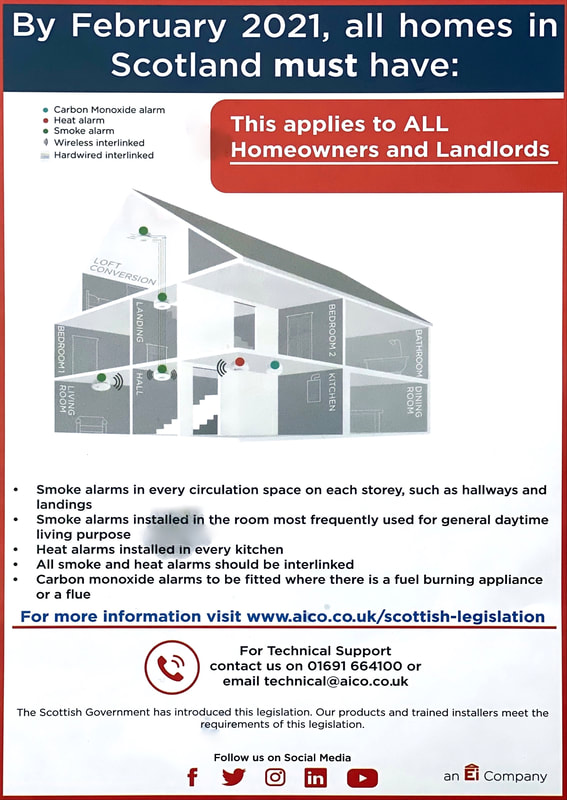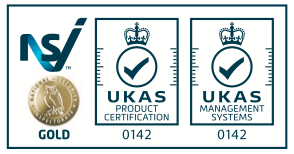What is required: Fire, Heat, Smoke Alarm and Carbon Monoxide Detectors
Fire and Smoke alarms in your home must be interlinked and this can be achieved via traditional cabling methods or wirelessly. This new legislation also requires a Carbon Monoxide detector to be installed where there is a fuel-burning appliance (such as boilers, fires, heaters and stoves) or where there is a flue. Homeowners and landlords must comply to the new Scottish legislation by February 2022.
If you already have Fire and Smoke alarms installed in your property, check that they are interlinked. If you have an alarm system but it does not currently meet the new requirements, you can expand your system with wireless interconnection. By having an interlinked system, the whole alarm system will be triggered if one alarm is activated meaning you are alerted immediately in the event of a fire.
If you need to expand your current alarm system, or if access to a permanent live is difficult, tamper proof long-life battery powered alarms can be used in place of main powered alarms with the tamper proof long-life battery back-up, providing they can be interlinked.
Once we receive your enquiry form with the details of your existing fire and smoke alarm detection in your property our team will review your information and then choose the most cost-effective and safest option in order that your property complies to the new legislation.
The method of complying could be a combination of cabled hard wired mains powered alarms, as well as long-life battery alarms. All fire and smoke alarms will be designed to interconnect with each other as per the legislation by either cable and/or by wireless connection. This may mean that the some or all of the existing detectors within your property will have to be renewed so that existing and new alarms all interlink with each other.
See below and also our Legislation page for further information.
If you already have Fire and Smoke alarms installed in your property, check that they are interlinked. If you have an alarm system but it does not currently meet the new requirements, you can expand your system with wireless interconnection. By having an interlinked system, the whole alarm system will be triggered if one alarm is activated meaning you are alerted immediately in the event of a fire.
If you need to expand your current alarm system, or if access to a permanent live is difficult, tamper proof long-life battery powered alarms can be used in place of main powered alarms with the tamper proof long-life battery back-up, providing they can be interlinked.
Once we receive your enquiry form with the details of your existing fire and smoke alarm detection in your property our team will review your information and then choose the most cost-effective and safest option in order that your property complies to the new legislation.
The method of complying could be a combination of cabled hard wired mains powered alarms, as well as long-life battery alarms. All fire and smoke alarms will be designed to interconnect with each other as per the legislation by either cable and/or by wireless connection. This may mean that the some or all of the existing detectors within your property will have to be renewed so that existing and new alarms all interlink with each other.
See below and also our Legislation page for further information.
|
Further detailed information is below.
But can you summarise what Fire, Smoke, Heat and Carbon Monoxide alarms I now require in my home to comply with the new legislation |
|
|
By 1st February 2021, ALL HOMES should comply to the Tolerable Standards by having:
|
|
|
Types and Grades of Smoke/Heat Alarms
|
The alarms can consist of the following Grades:
|
|
Carbon Monoxide Detectors
|
CO detectors should be fitted in all rooms where there is a fixed combustion appliance (excluding an appliance used solely for cooking) or a flue. CO detectors should comply with BS EN 50291 and be powered by a battery designed to operate for the working life of the detector. The detector should incorporate a warning device to alert the users when its working life is due to expire.
Hard wired mains operated CO detectors complying with BS EN 50291 (Type A) with fixed wiring (not plug in types) may be used as an alternative, provided that they are fitted with a sensor failure warning device. CO detectors should be regularly maintained and tested in accordance with the manufacturers instructions. |
|
What is the Legislation?
|
Our trained job booking team will be happy to discuss your requirements.
Please phone on 01786 813916 or book or enquire online.
We aim to provide a professional and efficient service from the initial job enquiry through to job completion.
Please phone on 01786 813916 or book or enquire online.
We aim to provide a professional and efficient service from the initial job enquiry through to job completion.
Some of the information and guidance on this website comes from a combination of sources such as SELECT, AICO and Scottish Government

